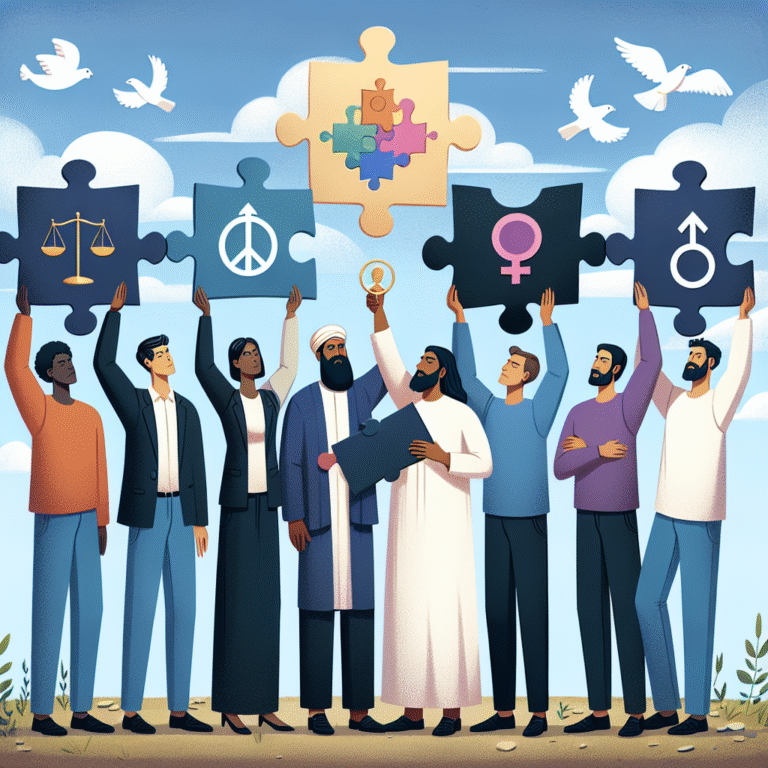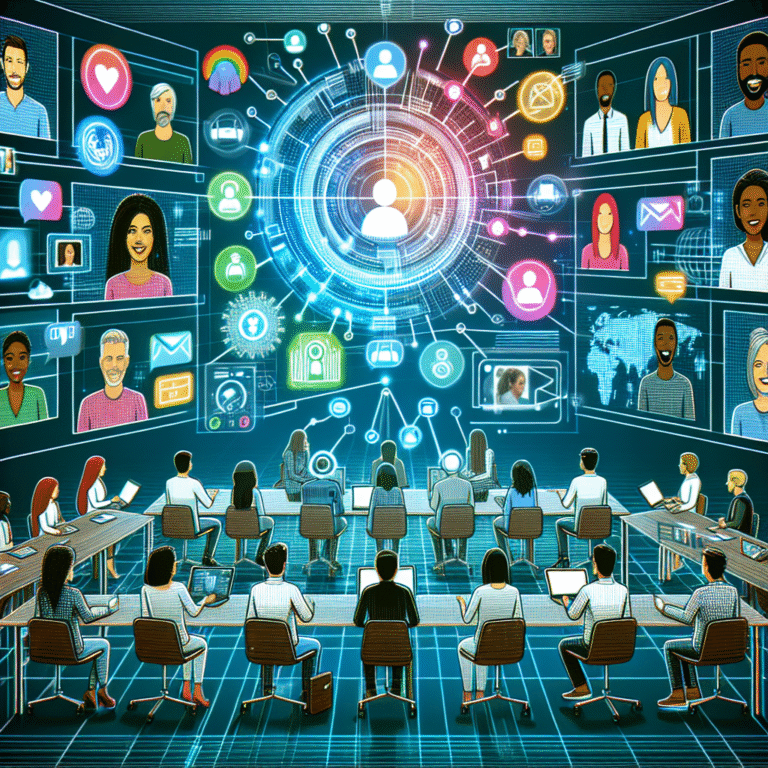
Introduction
In a world that is continuously evolving, the concept of gender roles is undergoing a paradigm shift that challenges age-old norms and expectations. The movement toward gender equality and fluidity is not merely a trend; it is a crucial dialogue that reshapes how individuals perceive themselves and others. The theme of "Breaking Boundaries: How Modern Society is Redefining Gender Roles" encapsulates this transformative journey. As we navigate through the complexities of identity, societal expectations, and personal aspirations, it becomes essential to understand how modern society is redefining what it means to be masculine, feminine, or non-binary in a contemporary context.
The Historical Context: A Brief Overview of Gender Roles
Traditional Gender Roles
Traditionally, societal norms dictated that men were the breadwinners, exhibiting traits of strength and stoicism, while women were seen as caretakers, nurturing and submissive. These roles were not merely suggestions but were woven into the fabric of cultures around the globe, influencing everything from family structures to workplace dynamics.
The Rise of Feminism and LGBTQ+ Movements
The 20th century was pivotal in challenging these entrenched norms. The suffragette movement gained momentum in the early 1900s, culminating in women’s right to vote. Feminism continued to evolve, embracing issues of intersectionality, while the LGBTQ+ rights movement pushed for the recognition of diverse gender identities and sexual orientations. This reformative period set the stage for today’s conversations around gender fluidity and roles.
Case Study: The Impact of the Second Wave of Feminism
The second wave of feminism in the 1960s and 70s marked a significant turning point in the quest for gender equality. It not only propelled women into the workforce but also began to challenge ideas around familial roles. By examining the strides made during this period, one can appreciate its profound impact on dismantling traditional gender roles, leading to greater freedom of choice today.
Modern Interpretations of Gender Roles
Gender Fluidity: A Contemporary Lens
In today’s society, the rigid binary classification of male and female is increasingly viewed as outdated. The concept of gender fluidity embraces the idea that gender exists on a spectrum. Individuals may identify anywhere from strictly male or female to non-binary, genderqueer, or gender non-conforming.
Table 1: Spectrum of Gender Identity
| Identity Label | Description |
|---|---|
| Male | Identifying strictly as a male |
| Female | Identifying strictly as a female |
| Non-binary | Not identifying exclusively as male or female |
| Genderqueer | A blend of both male and female traits |
| Gender Non-Conforming | Rejecting conventional gender expressions |
The Role of Language in Redefining Identity
Language plays a significant role in how we express gender. Phrases like "they/them" as singular pronouns have gained traction in public discourse, offering respectful alternatives for those who do not identify with binary gender labels. The adoption of inclusive language fosters an environment of acceptance and understanding.
Case Study: The Use of Pronouns in Academia
Institutions of higher learning have increasingly recognized the importance of using preferred gender pronouns. Schools and universities are incorporating pronoun usage into administrative procedures and classrooms. This case exemplifies a direct shift in social consciousness toward recognizing and respecting individuals’ identities, prompting discussions around gender roles and the ongoing fight against discrimination.
The Workplace: Redefining Gender Roles
Breaking the Glass Ceiling
Women in leadership positions have steadily increased, but the challenge persists. Breaking the glass ceiling requires not only individual ambition but collective societal change. Companies are increasingly adopting policies that promote gender equity, allowing for an environment where diverse perspectives enhance creativity and productivity.
Case Study: Gender Equity in Leadership at Companies
Research conducted by McKinsey & Company highlights that businesses with a higher representation of women in decision-making roles are 21% more likely to outperform on profitability. Companies such as Unilever and Dow are noted for their proactive stance in addressing gender roles by implementing equality initiatives that have proven successful in enhancing their organizational culture and performance.
Table 2: Companies with Notable Gender Diversity Policies
| Company | Initiative | Impact |
|---|---|---|
| Unilever | Gender equity initiatives | Improved company performance |
| Dow | Inclusive hiring policies | Increased female leadership presence |
| Salesforce | Equal pay assessment | Addressed gender wage gap |
The Rise of Paternity Leave
In recent years, there has been a growing recognition of the importance of paternal involvement in child-rearing. Companies offering paternity leave are breaking down stereotypes that associate child-rearing solely with women. This shift not only promotes gender equality but also enriches family dynamics and children’s development.
Societal Movements and Their Impact
Activism in the Age of Social Media
Platforms like Twitter, Instagram, and TikTok have become powerful tools for activism, enabling individuals to share their stories and experiences. Social media campaigns like #MeToo and #TransRightsAreHumanRights have amplified voices that challenge traditional gender roles and demand change.
Case Study: #MeToo Movement
The #MeToo movement ignited a global conversation about sexual harassment and assault, affecting victims across gender lines. The movement’s impact has prompted policy changes in workplaces, schools, and beyond, creating safer environments for all genders and promoting accountability for unacceptable behaviors.
Education’s Role in Redefining Gender Roles
Gender Sensitivity in Curricula
Integrating gender studies into educational curricula allows young minds to explore complex concepts related to identity, power dynamics, and societal stereotypes. This approach better prepares students to engage in discussions about gender roles, creating a culture of acceptance and understanding.
Case Study: Gender Education Programs in Schools
Some educational institutions have implemented comprehensive gender education programs that aim to educate students on gender diversity, fostering empathy and combatting discrimination. By understanding the narratives of diverse gender identities, students are equipped to navigate a multifaceted world.
The Influence of Pop Culture on Gender Roles
Media Representation
Television shows, movies, and advertising have the power to shape societal norms. Increased representation of non-binary characters and strong female leads reflects a shift toward acceptance of diverse gender roles. This visibility not only normalizes conversations about gender but also uplifts narratives that challenge stereotypes.
Case Study: The Role of TV in Breaking Gender Stereotypes
Shows like "Pose" and "The L Word" highlight queer experiences, breaking boundaries around gender expression. These narratives prompt viewers to question their own perceptions of gender roles and identity, thereby fostering greater acceptance in society.
Conclusion
Breaking Boundaries: How Modern Society is Redefining Gender Roles is not merely a discussion on identity but a celebration of inclusivity and self-expression. The transformation in perceptions and expectations surrounding gender is evident in various facets of society—from workplaces and educational institutions to popular culture. By embracing these changes, society not only acknowledges diverse identities but also cultivates a richer, more inclusive human experience.
Actionable Insights
- Encourage Dialogue: Foster open conversations about gender roles in your community, workplace, or family.
- Support Inclusive Policies: Advocate for organizations committing to gender diversity and equality.
- Educate Yourself: Explore books, articles, and seminars on gender studies to deepen your understanding.
FAQs
1. What does gender fluidity mean?
Gender fluidity refers to a gender identity that is not fixed and may change over time. Individuals who identify as gender fluid may feel more masculine on some days and more feminine on others or may move between gender identities altogether.
2. How can workplaces promote gender equality?
Organizations can promote gender equality by implementing fair hiring practices, ensuring equal pay, providing parental leave for all genders, and creating diversity and inclusion training programs.
3. What is the significance of using preferred pronouns?
Using preferred pronouns shows respect for individuals’ identities, fosters inclusion, and helps create a safe environment for everyone. It acknowledges and validates the diverse ways in which people recognize their gender.
4. How has social media impacted conversations around gender roles?
Social media serves as a powerful platform for raising awareness, sharing personal experiences, and connecting individuals who challenge traditional notions of gender. It has played a crucial role in advancing movements for gender equality and social justice.
5. Why is it important to include gender studies in education?
Including gender studies in education promotes a deeper understanding of identity and social structures, helps combat stereotypes, and prepares students to be empathetic and informed citizens in a diverse society.
By examining the nuances of gender roles through the lens of "Breaking Boundaries: How Modern Society is Redefining Gender Roles," we propel ourselves toward a world of understanding, acceptance, and shared humanity. As the journey continues, let us be guided by compassion and the desire to create welcoming spaces for all identities.

















